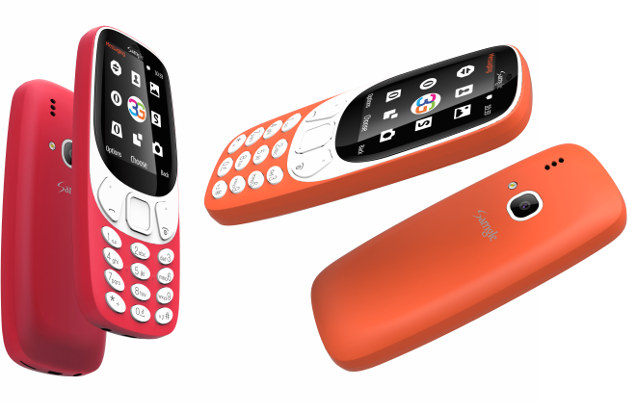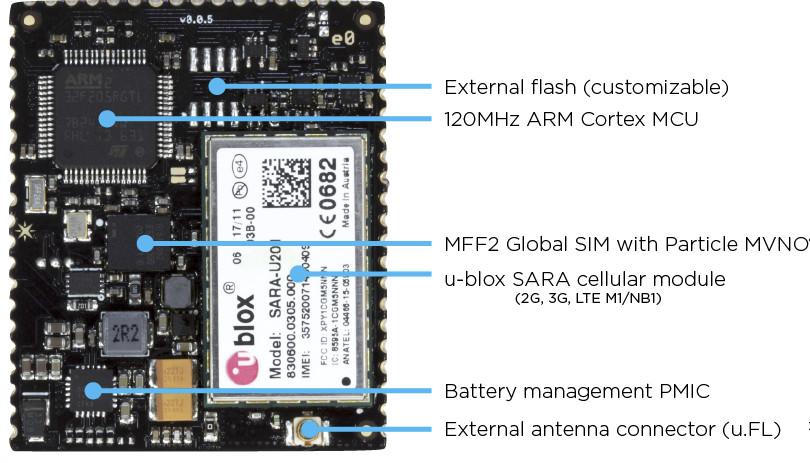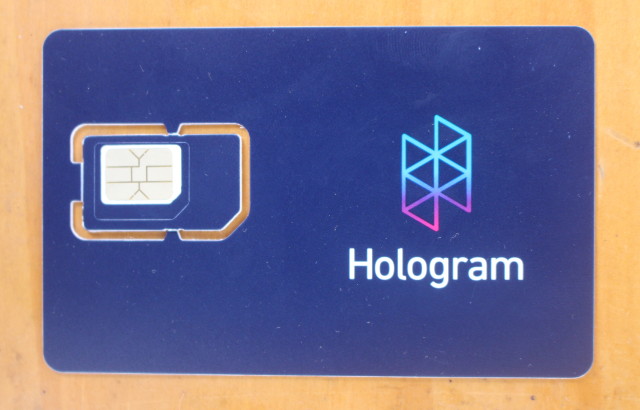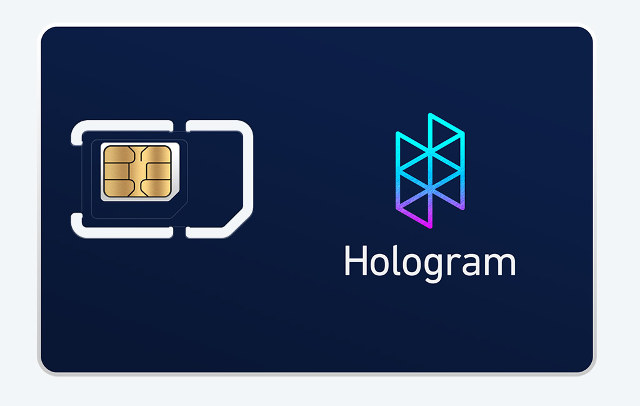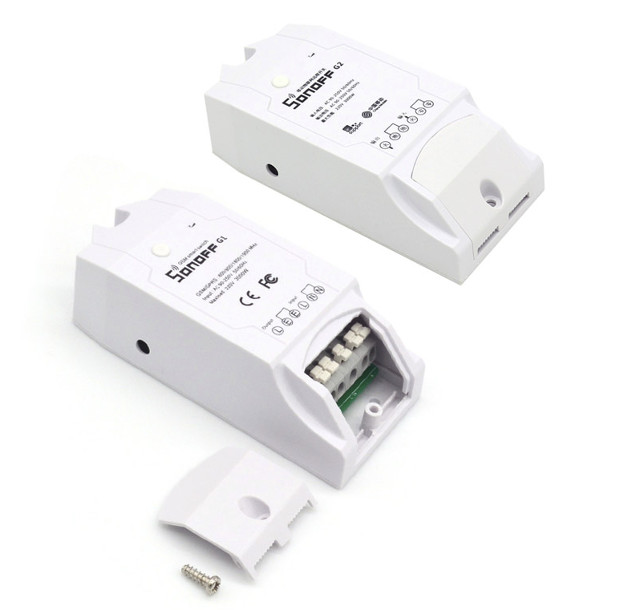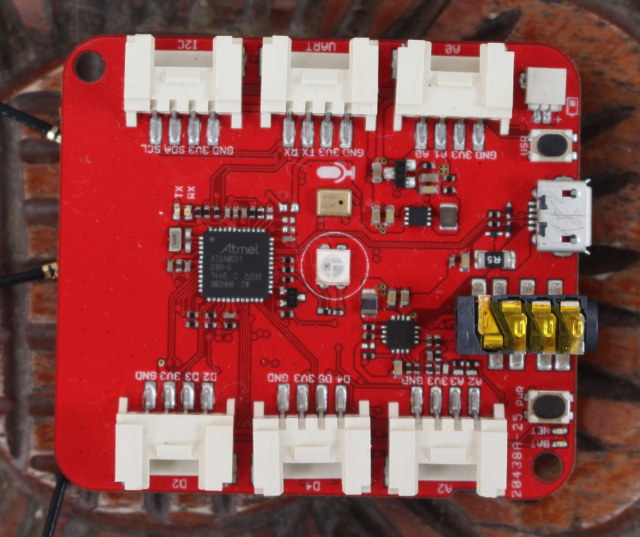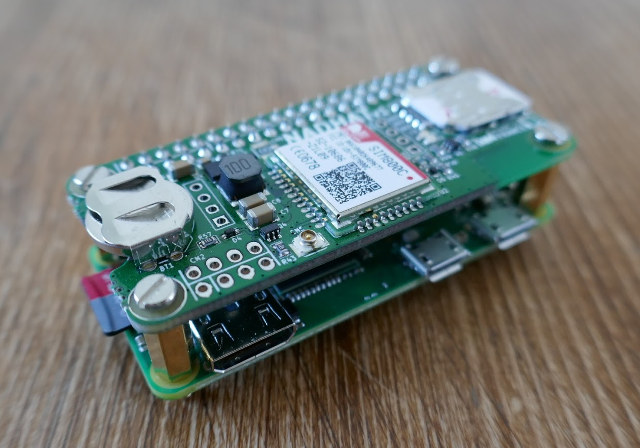Let’s say you have a product, and need to create a brand or company name… Just think about two world famous brands or companies such as Samsung and Google, and with clever string manipulation come up with your own original brand: Samgle! Now you need a product name… Find a product from a third brand that’s similar to yours, for example Nokia 3310 3G phone, and you’ve got all your names sorted! Meet Samgle 3G 3310 feature phone with 2G and 3G connectivity. Samgle 3G 3310 specifications: SoC – TBD System Memory – 64MB RAM Storage – 128MB flash, micro SD slot up to 32GB (or is it 64GB?) Display – 2.4″ curved 320×240 display Camera – 2.0M rear camera Cellular connectivity 2G GSM – 850/600/1800/1900 MHz 3G WCDMA – 900/2100 MHz SIM Card Type – SIM + SIM/micro SD card; Dual SIM dual standby Other Wireless Connectivity – Bluetooth […]
Particle E Series is a Family of 2G, 3G, 4G LTE Cellular IoT Modules Optimized for Mass Production
Cellular IoT has really taken off this year from the low cost Orange Pi 2G IoT board to 4G GPS Trackers, and global IoT SIM cards. Particle has been in this market for a couple of years, starting with their Electron boards, and the company has just announced the new Particle E series family of industrialized 2G, 3G, and LTE-enabled modules and a development kit. Key features of Particles E series modules: Cellular Connectivity u-blox SARA modules for cellular connectivity LTE: SARA-R410M 3G: SARA-U201/U260/U270 2G: SARA-G350 (2G) Embedded SIM card, Particle MVNO support in 100+ countries u.FL antenna connector MCU – STM32F205RGT6 120MHz ARM Cortex M3 microcontroller with 1MB flash, 128KB RAM Storage – • Expandable flash memory I/Os – 63-pin surface mountable castellated module with up 30x GPIOs, 12x ADC, 2x DAC, 13x PWM, 3x UART, 2x SPI, 1x I2S, 2x CAN, 1x USB 2.0 (Some signals are multiplexed) […]
Checking out Hologram’s Developer SIM Card for Worldwide IoT Projects
Hologram is a service that offers 2G/3G/4G cellular connectivity for the Internet of Things via a SIM card that works in over 170 countries, and with pricing starting at $0.40 per month. In order to promote their services, the company offers a free developer SIM card which I ordered when I first wrote about the service last month. I was pleased and surprised they would sent it to Asia for free, and I got the card in a bubble envelop. The back of the card includes a 18 to 22 digit SIM card number and bar code, that we’ll need to use for activation, and a link that redirects to https://hologram.io/docs/. I planned to try the card with Wio GPS tracker board which requires a nano SIM card, and there are convenient cutouts to convert the SIM card to micro SIM or nano SIM card formats. Before using the card […]
Hologram LTE Software-Defined Global Network for Cellular IoT Projects Starts at $0.40 per Month per Device
Cellular connectivity can be rather expensive, and in the IoT realms, new LTE standards are still evolving and you may want to manage your own mini cellular network, so ideally we would need a provider that offers both low cost and flexibility. Hologram LTE network does both as it’s a software-defined network, and pricing starts at $5 for the SIM card and $0.40 per month per device. The company also just announced that their network was available for global deployment with the service available in more than 170 countries via partnerships through over 200 cellular carriers. The SIM card supports automatic roaming and carrier switching, and spacebridge inbound tunnel access allows for secure remote programming and device management. The SIM card specifications are as follows: 2G/GPRS, 3G HSPDA, 4G LTE Read/Write Cycles: Min. 500,000 Operating Temperature: -25°C ~ 85°C Data Retention: Min. 25 years at 25°C Triple-cut for Mini, Micro, […]
Sonoff G1 AC Powered Smart Power Switch Works Over 2G GSM/GPRS
Today, I’ve searched for AC powered wireless switched similar to Sonoff devices, but with ESP32 instead in order to get WiFi and Bluetooth, since the latter is better to use with a battery powered buttons. I did find a DC powered board, but no AC powered ones yet. However, as I visited ITEAD website to check if they had anything of the sort, I discovered they had a new model called Sonoff G1, similar to Sonoff TH16, but instead of using WiFi, you can use 2G GSM/GPRS to control the switch remotely. Sonoff G1 specifications: Wireless Module – ST86 quad band GSM/GPRS module GSM/GPRS connectivity GSM850, EGSM900, DCS1800 and PCS1900 MHz support GPRS multi-slot class 10, GPRS mobile station class B 1.8V, 3V SIM card slot Transmit power: Class 4 (2W): GSM850, EGSM900; Class 1 (1W): DCS1800, PCS1900 Relay – Up to 16A (3000 Watts max) Terminals – 6 terminals […]
Review of Wio Tracker with GPS, Bluetooth 3.0 and GSM Connectivity
Wio GPS – also called Wio Tracker – is an Arduino compatible board based on Microchip Atmel SAMD21 MCU with GPS, Bluetooth, GSM/GPRS connectivity, as well as several Grove connectors to connect sensors and modules for your IoT project. SeeedStudio sent me a sample for evaluation, so I’ve tested it, and reported my experience below by testing some of the Arduino sketches. Wio Tracker Unboxing All I got in the package was Wio GPS tracker v1.1 board. The top includes the Atmel MCU, an RGB LED, a microphone and 3.5mm AUX jack to make phone calls, a user and power button, a micro USB port for power and programming, a small 2-pin connector for a battery, and 6 Grove connectors for digital, serial, I2C and analog modules. The other side of the board comes with Quectel MC20 module that handles Bluetooth, GPS and GSM, a dual use micro SD card […]
Nadhat is an Add-on Board for Raspberry Pi Boards with 2G GSM/GPRS Support
Making Raspberry Pi HATs for fun seems to have become a popular hobby, as after checking out Leon Anavi’s Infrared pHAT a little while ago, I’ve just come across Nadhat add-on board with GSM/GPRS and Bluetooth 3.0 made by Frederic Pierson in his spare time. Nad stands for “Network Access Device”, and the device comes with the following specifications: SIM800C module with 2G GSM/GPRS support, and Bluetooth 3.0 + EDR (but Bluetooth is not mentioned by the developer, so it may not work right now) SIM card slot + connector for GSM antenna CR1225 cell battery slot for RTC 40-pin header provided, but not soldered Dimensions – 65 x30 mm, compatible with Raspberry Pi Zero He explains that he made the board himself and the PCBs “are leaded reflow processed and do not follow regulations in Europe”. You’ll also have to provide your own GSM antenna and CR1225 battery. He’s […]
Wio GPS is a $40 Grove & Arduino Compatible Bluetooth 3.0 + GSM/GPRS + GPS Tracker Board
After Wio Link and Wio Node boards, Seeed Studio has added a new board to their Wio (Wireless Input Output) family with Wio GPS board based on Microchip SAMD21 Cortex M0+ MCU for Arduino compatibility, and Mediatek MT2503 ARM7 processor for GPS, Bluetooth 3.0, and 2G (GPRS) connectivity. Wio GPS board specifications: MCU – Microchip ATSAMD21G18A-MU ARM Cortex M0+ MCU @ 48 MHz with 256KB flash, 32KB SRAM Wireless SoC – Mediatek MT2503 ARM7EJ-S processor @ 260 MHz Storage – micro SD slot (shared with nano SIM slot) Connectivity (built-in MT2503 in Quectel MC20 module) Bluetooth 2.1 + EDR, 3.0 with SPP Profile and HFP-AG Profile; u.FL connector for external antenna Quad band 2G GSM/GPRS with u.FL connector for external antenna and nano SIM card slot GNSS – GPS + BeiDou + QZSS with u.FL connector for external antenna Audio – Speaker footprint (+/-), 3.5mm AUX jack with mic and stereo audio […]


